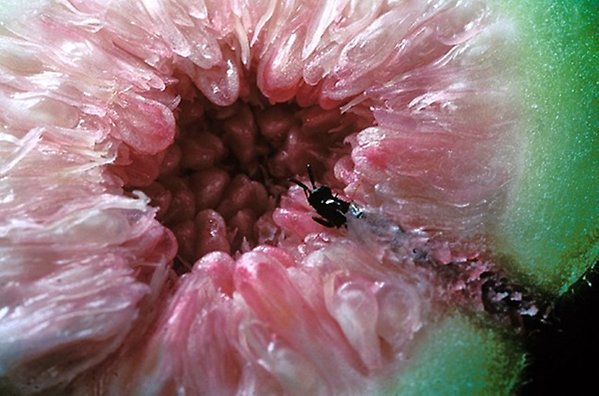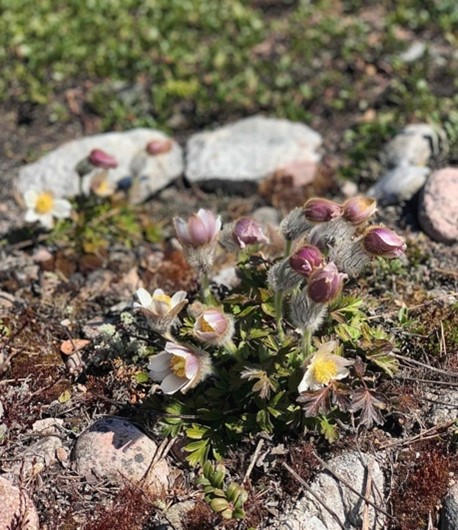Jandér lab
Ecology and evolution of mutualisms

Female pollinator fig wasp (Tetrapus sp.) enters a flowering fig of Ficus maxima, where she will pollinate and lay her eggs. Photo: C. Ziegler.
Our research focuses on the ecology and evolution of species interactions, especially mutualisms (interactions where both members benefit). Mutualisms are present nearly everywhere, and are essential for many ecosystems. For example, many plants need pollinators to reproduce, and many animals, including humans, need gut bacteria to take up nutrients. But why would individuals from different species provide costly benefits to each other - what prevents partners from turning into cheaters? How are mutualisms maintained despite these and other challenges? Our research explores these, and other questions related to the ecology and evolution of mutualisms.

The red-listed spring pasque flower (Pulsatilla vernalis) thrives after the conservation intervention prescribed burning. Photo: C. Hagström.
Group members
Publications
Part of Acta Oecologica, 2024
- DOI for A new player in the Panamanian fig tree – fig wasp mutualism: a study on the effect of gall midges on Ficus citrifolia
- Download full text (pdf) of A new player in the Panamanian fig tree – fig wasp mutualism: a study on the effect of gall midges on Ficus citrifolia
Part of Flora, 2023
Part of Ecology and Evolution, 2023
- DOI for Pollinator and host sharing lead to hybridization and introgression in Panamanian free-standing figs, but not in their pollinator wasps
- Download full text (pdf) of Pollinator and host sharing lead to hybridization and introgression in Panamanian free-standing figs, but not in their pollinator wasps
Asymmetric and uncertain interactions within mutualisms
Part of Journal of Plant Ecology, 2023
The effect of prescribed burning on Pulsatilla vernalis at Marma military training area in Sweden
Part of Conservation Evidence Journal, p. 13-20, 2023
Rising temperatures threaten pollinators of fig trees-Keystone resources of tropical forests
Part of Ecology and Evolution, 2022
- DOI for Rising temperatures threaten pollinators of fig trees-Keystone resources of tropical forests
- Download full text (pdf) of Rising temperatures threaten pollinators of fig trees-Keystone resources of tropical forests
Part of Proceedings of the National Academy of Sciences of the United States of America, 2021
Fitness costs for fig wasps that fail to pollinate their host Ficus perforata
Part of Symbiosis, p. 171-178, 2021
- DOI for Fitness costs for fig wasps that fail to pollinate their host Ficus perforata
- Download full text (pdf) of Fitness costs for fig wasps that fail to pollinate their host Ficus perforata
Sulfadiazine Masquerading as a Natural Product from Scilla madeirensis (Scilloideae)
Part of Journal of Natural Products, p. 1305-1308, 2020
- DOI for Sulfadiazine Masquerading as a Natural Product from Scilla madeirensis (Scilloideae)
- Download full text (pdf) of Sulfadiazine Masquerading as a Natural Product from Scilla madeirensis (Scilloideae)
Part of Evolution, p. 2295-2311, 2019

